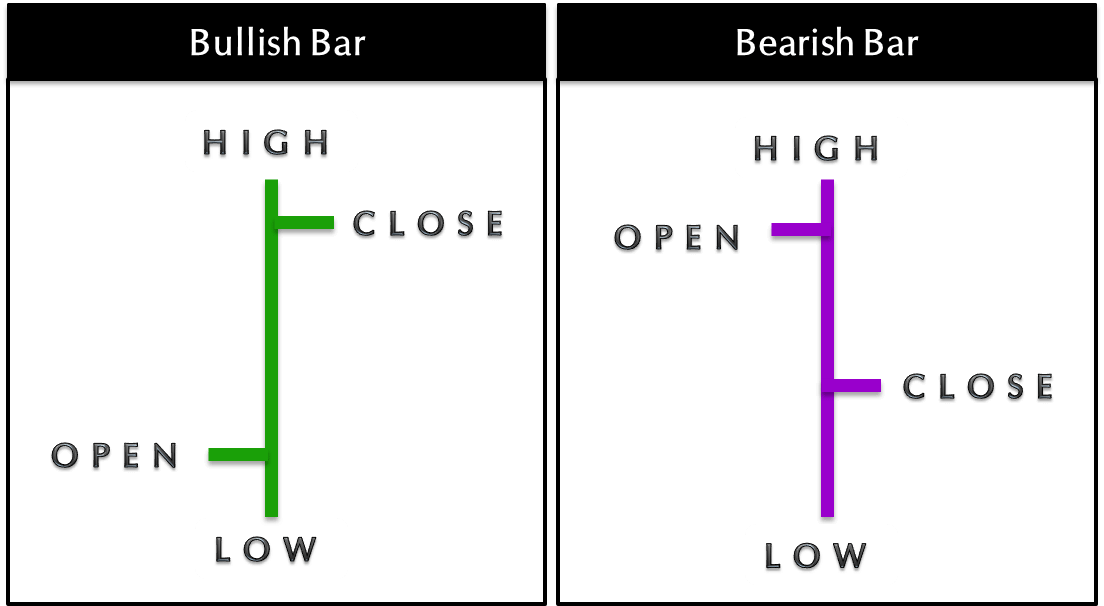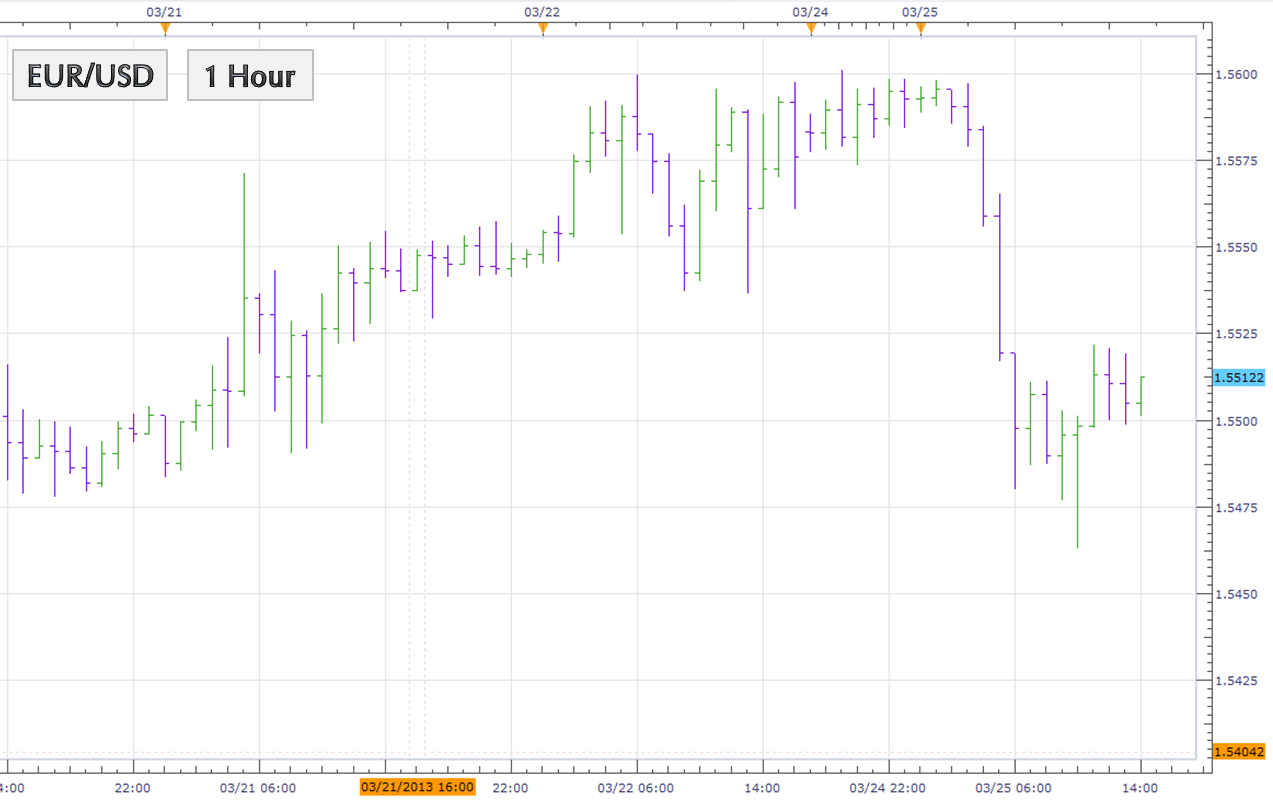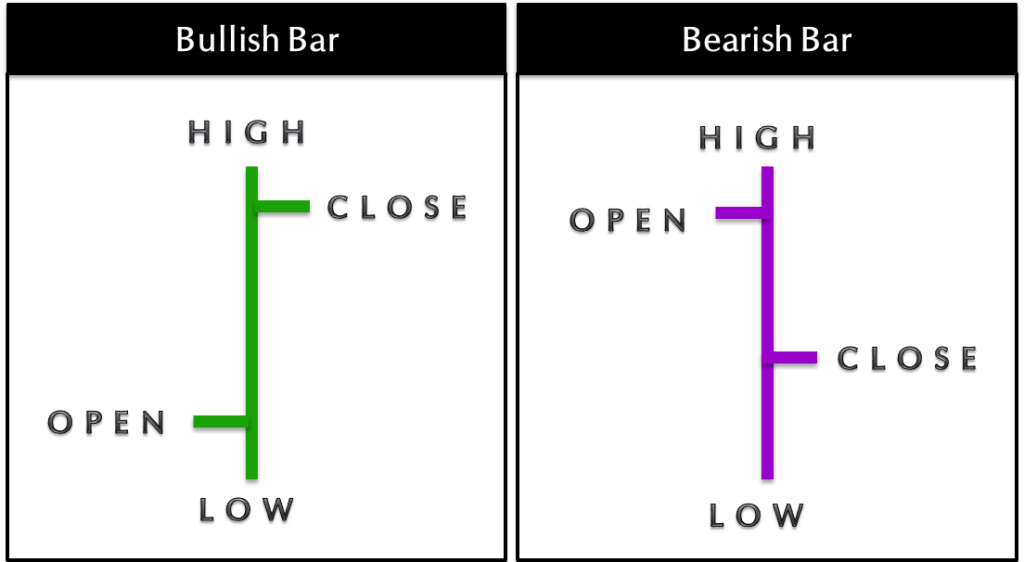The bar charts were invented after line charts. The nosy and geeky traders were dying of curiosity and wanted to visually see where the currency pair is moving during a specific time periods, especially longer periods such as hourly, 4-hour, daily or monthly. They could of course set their charts to 1-minute to see the most recent movements, but by doing that, they would miss out on the general view on the market. If only there was a way to know what prices the pair covered during a specific period of time…
The Invention of Bar Charts
This led to invention of the second generation charts: the Bar Charts. Bar charts are more informative compared to Line Charts because they display not only the closing prices but the open, high, and low prices as well.
FREE MasterClass: Take Control of Your Financial Future >>
In other words, by keeping an eye on a Bar Chart, you can know that in a given time period where in the forex dance floor (aka platform) the pair started dancing, where they dipped, where they jumped, and where they ended the round. Now this may not be useful at all if you were just watching a couple dancing Argentine tango, but in forex trading, it can reveal many useful secrets. Here is what a bar looks like (Not to be confused with a chocolate bar, legal bar exam, or a retail establishment that serves alcoholic beverages.)
 Bar Charts Show Open, High, Low, Close Prices
Bar Charts Show Open, High, Low, Close Prices
Open: The little horizontal line to the left is aligned with the open price at a given time period
High: The top of the vertical line shows the highest price in that time period
Low: The bottom of the vertical line is the lowest price of the time period
Close: The little horizontal line to the right is the last price or the closing point of the time period
This is how Bars are shown in action on the forex dance floor:
 Bar Charts Example
Bar Charts Example
In the hourly bar chart above, it takes one hour to form one bar. Each bar displays the open, high, low and close prices for that hour.
3 Secrets to Take Control of Your Financial Future >>
Related:

#1 Best Selling Author. Helping you accelerate your retirement with Triple Compounding™ Former engineer on a mission to help 1 million households take control of their finances. Founder & CEO of Invest Diva.
